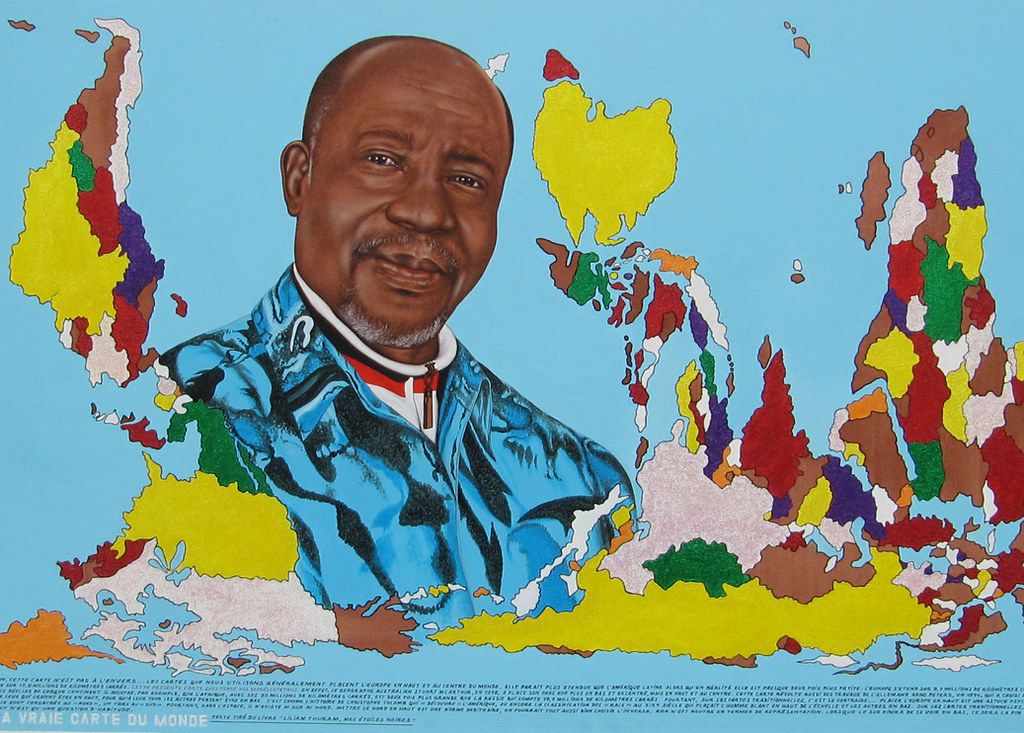
To finish on a high note, here’s a short focus on one of them: This painter from the Democratic Republic of Congo is one of the most sought-after African artists on the contemporary art market!

How can his works be recognized?

Chéri Samba’s works are meeting with great success on the international art market.
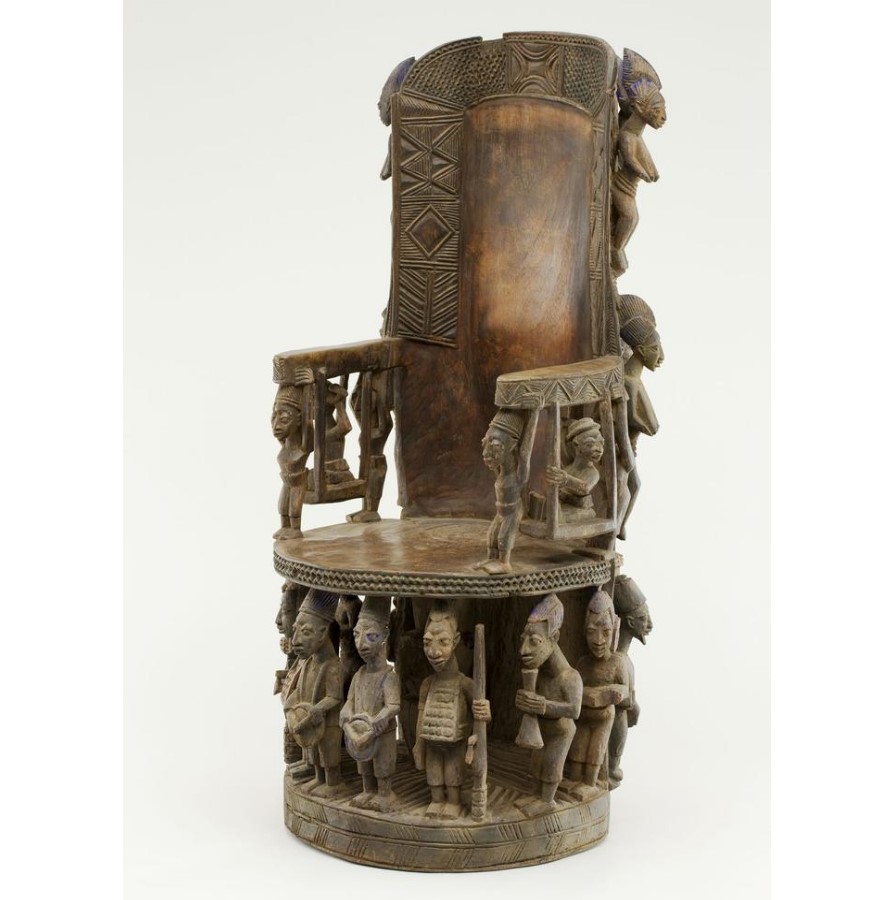
Who are the African artists of today?
Some of them continue to create traditional African art. The best-known example is Olowe d’Ise (who died in 1938), one of the most famous African artists.
There are also artists who, on the contrary, have totally broken with the past! These contemporary artists play with traditional codes to hijack them more effectively. Today, the African art world is incredibly dynamic and varied. Here are just a few examples:
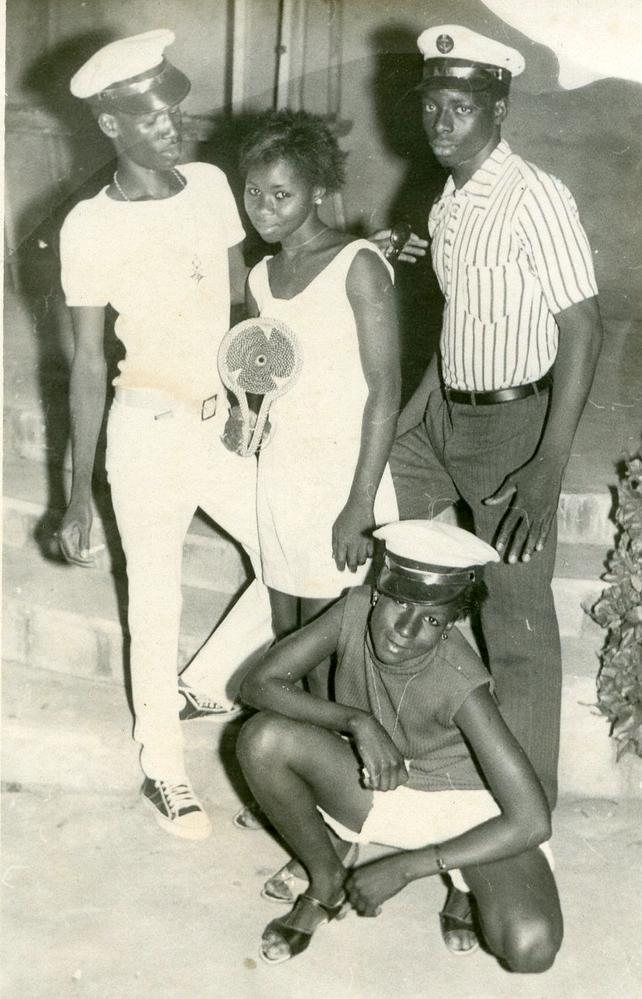
Malick Sidibé, Untitled (Group)
around 1960, only print run of the period, Magnin-A Gallery © Estate of Malick Sidibé

Mary Sibande, I’m a Lady,
2009, photograph, 35 x 23.62 inches. Photo: DR
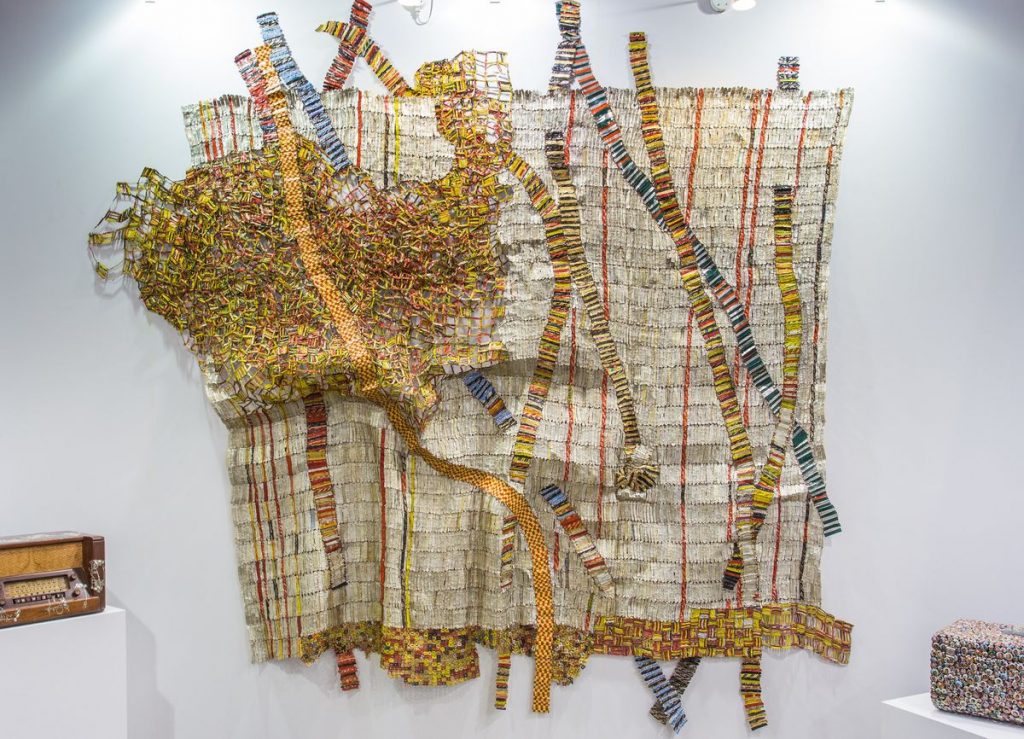
El Anatsui, 19th,
2015, Domain of Chaumont-sur-Loire. Photo: Eric Sander, DR

Contemporary African artists, some of whom have broken away from tradition and some of whom have not, make up a dynamic art scene.
In the streets of our big cities this brightly coloured fabric is everywhere. In West Africa these fabrics are known as “waxes”, from the English word, because this material is used in the technique used to print them.
Is this fabric really African? In reality, the technique came from Indonesian fabrics, which the Dutch copied in their factories during the 19th century. In the face of African enthusiasm for it, Europeans sold kilometers of this industrial fabric on the continent’s markets. On the other hand, the motifs are often African creations, with very codified meanings!
Today, waxes are still all the rage in Africa, but also in Europe!

Wax fabrics, which are associated with Africa, come from Holland and were sold on the African market by Europeans during the 19th century.


Aimé Césaire, a politician and committed writer from Martinique, defended the idea of “negritude”.
Although some of the African objects in Europe were acquired legally, others arrived under much murkier circumstances. For several years now, Africans have been organising themselves to demand the restitution of certain items.
In 2016, Benin demanded the restitution of King Behanzin’s treasures, which were kept in the Quai Branly-Jacques Chirac museum, for a very good reason: they had been pillaged by French colonial troops in 1892 during the looting of Abomey.
In 2020, the French National Assembly passed a law providing for the restitution of around twenty items to Benin and Senegal. They were returned to Benin in November 2021.
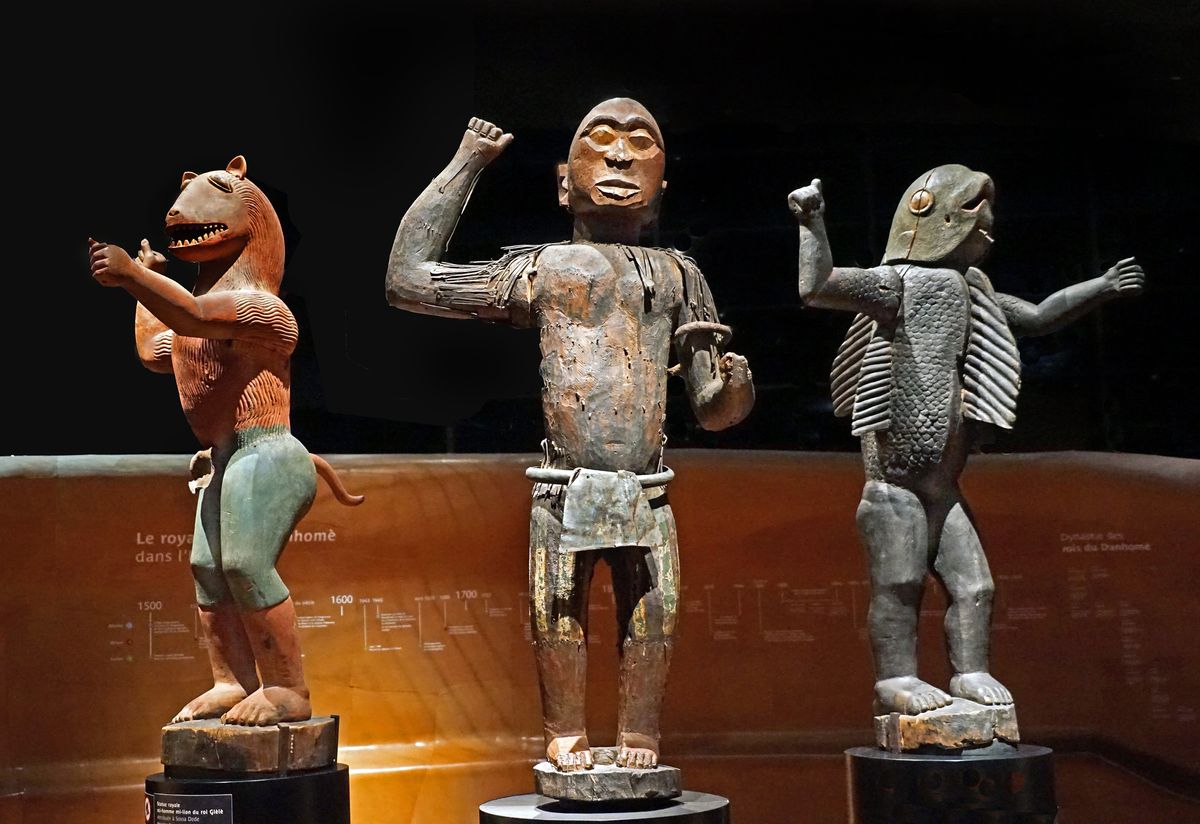

African countries are today demanding the restitution of objects pillaged or taken illegally by Europeans.
What they were doing was not just taking natural and human resources for themselves but also cultural objects…
In 1931, the “Dakar-Djibouti Mission”, a French scientific expedition, crossed the African continent. What was their aim? To collect objects and documentation on the populations they met.
When they stopped in a village in Mali, the French explorers discovered a boli. This religious object is known as a fetish. It is extremely sacred to the Bamana people, who use it to capture and control vital energy.
They tried to acquire it, but the villagers were firmly opposed. Griaule and Leiris decided to steal the boli, which is still conserved today in a French museum.
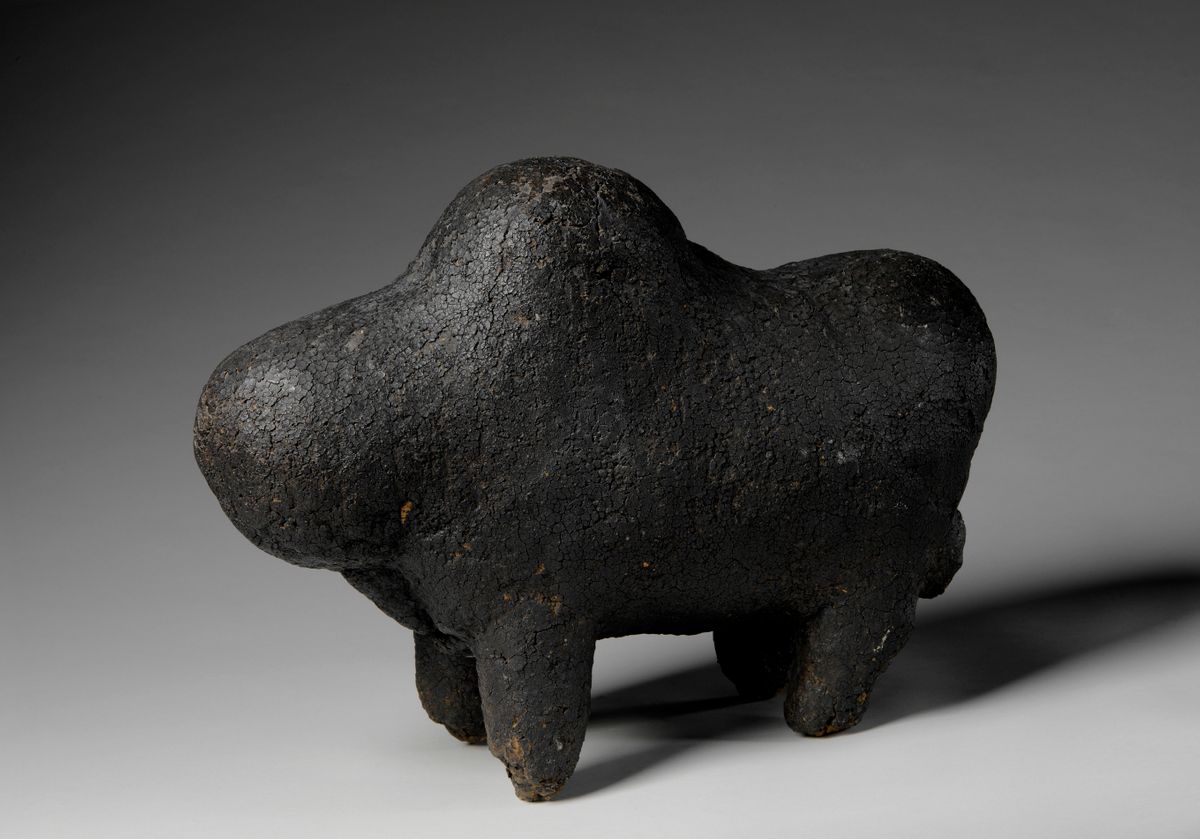

In 1931, two members of a scientific expedition stole a sacred boli in a village in Mali.
Slavery has made an indelible mark on African history. Between the sixth and 20th centuries, an estimated 25 million Africans were treated as goods and sold.
The Portuguese were the first Europeans to send slaves to the American continent, but it was the English and the French who made slavery into a terribly efficient machine, or “triangular trade.”
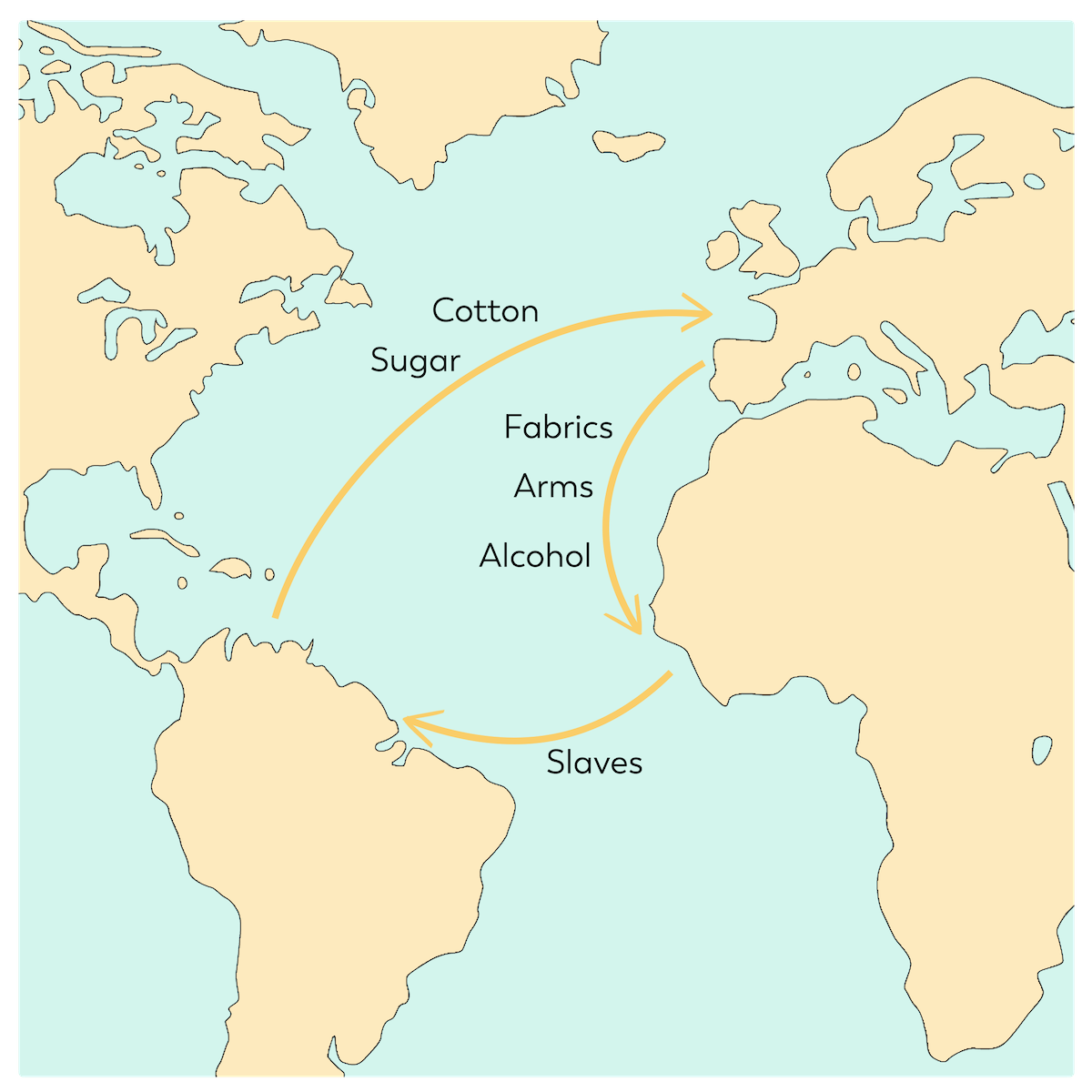
Not content with simply trading slaves, Europeans explored the African continent, looking for raw materials such as rubber, and conquering these territories in the name of their colonial empires.
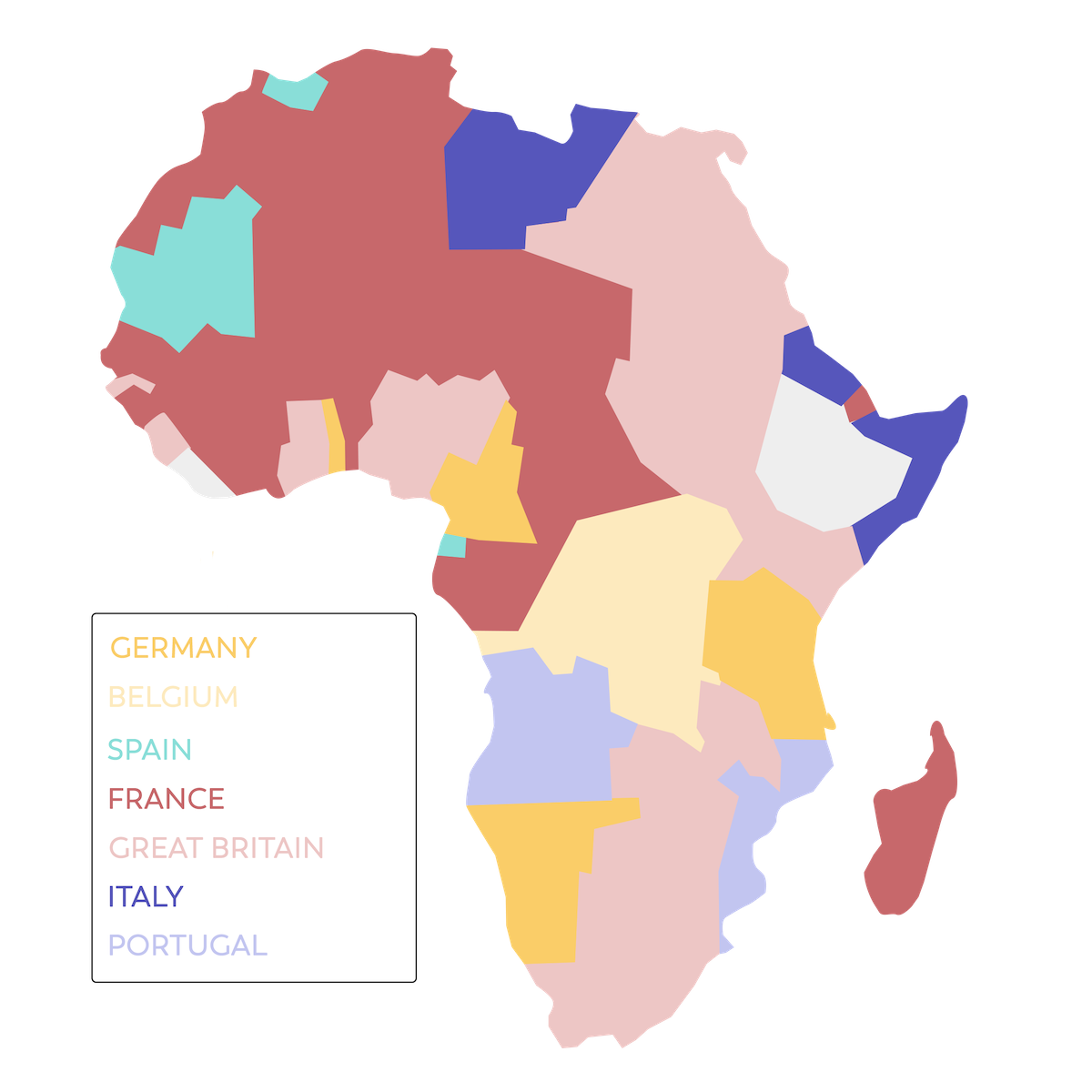

Europeans conquered and exploited the African continent, sending many Africans to America as slaves.
King Behanzin was not easygoing, and he had himself portrayed in the form of a man with a shark’s head. Watch out, anyone who threatened his State!
Just before the French arrived in the capital, he set his palace on fire, but faced with the military supremacy of the French, he finally decided to surrender in 1894. The French, afraid that he would lead another revolt, exiled him to Martinique, where he lived until his death …
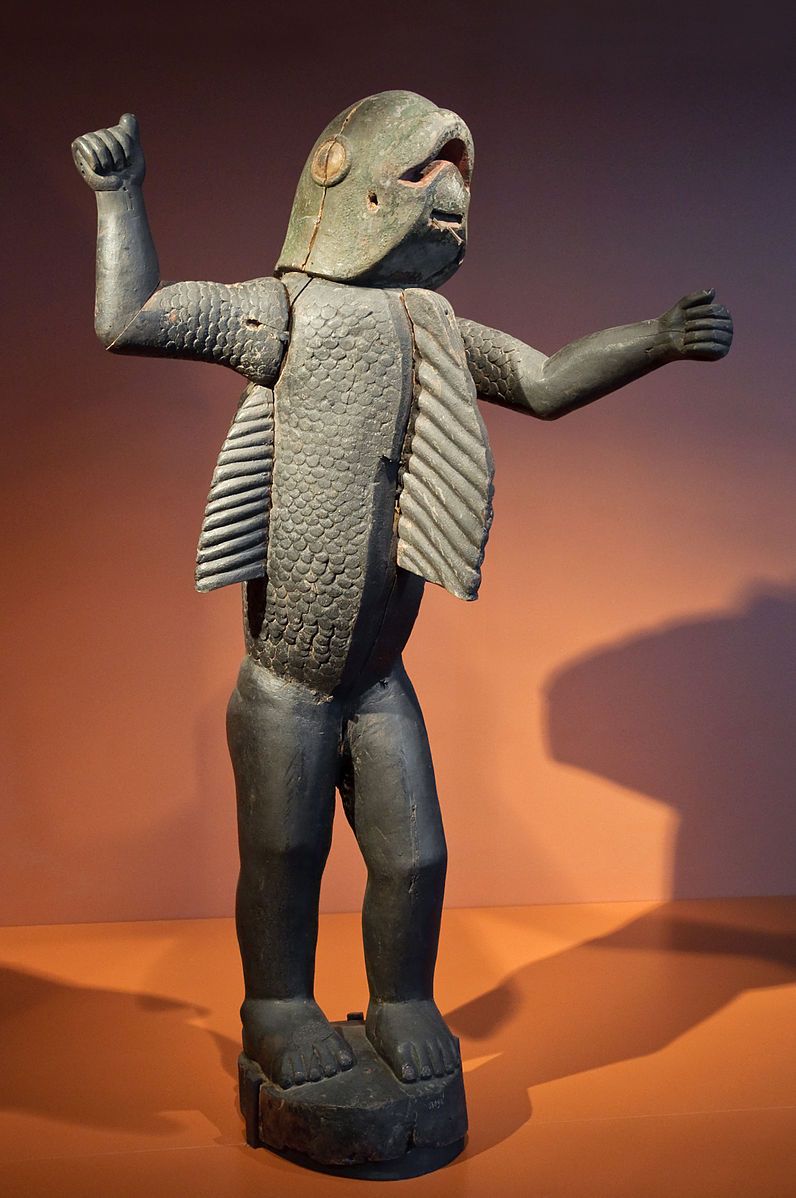

King Behanzin, portrayed in art with a shark’s head, had to surrender to the French in 1894.

"*" indicates required fields
Notifications